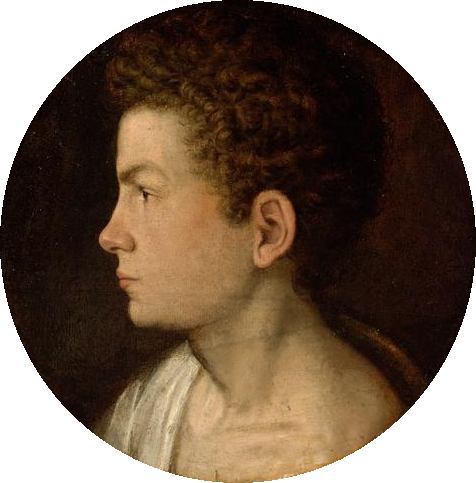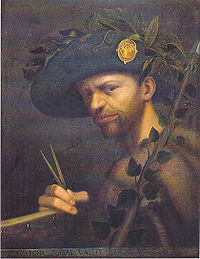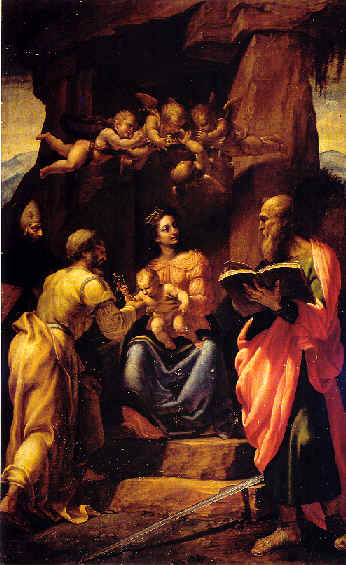<Back to Index>
- Geologist Christian Leopold von Buch, 1774
- Painter Gian Paolo Lomazzo, 1538
- Commander in Chief of the Continental Navy Esek Hopkins, 1718
PAGE SPONSOR

Gian Paolo Lomazzo (26 April 1538 – 27 January 1592; his first name is sometimes also given as "Giovan" or "Giovanni") was an Italian painter, more remembered for his writings on art theory, belonging to the second generation that produced Mannerism in Italian art and architecture.
Gian Paolo Lomazzo was born in Milan from a family emigrated from the town of Lomazzo. His early training was with Giovan Battista della Cerva in Milan. He painted a large Allegory of the Lenten Feast for San Agostino in Piacenza (1567). He also painted an elaborate dome with Glory of Angels for the Capella Foppa in San Marco in Milan. He also painted the Fall of Simon Magus in the wall of the chapel.
Lomazzo became blind in 1571, and turning to writing, produced two complex treatises that are milestones in the development of art criticism. His first work, Trattato dell'arte della pittura, scoltura et architettura (1584) is in part a guide to contemporary concepts of decorum, which the Renaissance inherited in part from Antiquity, which controlled a consonance between the functions of interiors and the kinds of painted and sculpted decors that would be suitable; Lespingola offered a systematic codification of esthetics that typifies the increasingly formalized and academic approaches typical of the later sixteenth century.
His less practical and more metaphysical Idea del tempio della pittura ("The ideal temple of painting", 1590) offers a description along the lines of the "four temperaments" theory of the human nature and personality, containing the explanations of the role of individuality in judgment and artistic invention.
Lomazzo's criticism took into account three aspects of critical viewing of works of art: doctrina, the record of discoveries — such as perspective — that artists had made in the course of history; prattica, the personal preferences and maniera of the artist, and iconography, the literary element in arts. Lomazzo’s contribution to art criticism was his systematic extraction of abstract concepts from art, not merely a recounting of the marvels of verisimilitude and technique and anecdotes of the works' reception among contemporaries of the type that Giorgio Vasari had reported in the previous generation.
Giovanni Ambrogio Figino and Girolamo Ciocca were his pupils.

